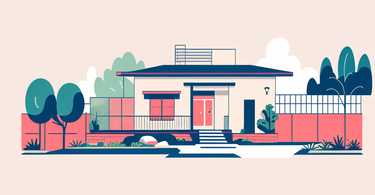Understanding the Aesthetic Value of Composite Fencing
The Role of Composite Fencing in Home Exterior Design
Composite fencing plays a key role in enhancing a home's exterior design. It offers a modern and sleek look that can boost curb appeal instantly. These fences come in various colors and styles to match any home's aesthetic. They can mimic the look of natural wood without the drawbacks.

Composite fence pickets provide a uniform appearance that stays attractive for years. They create clean lines and a polished look that defines property boundaries. This material serves as an excellent backdrop for landscaping and outdoor decor. It allows homeowners to create a cohesive and appealing exterior design.
Moreover, composite fencing can complement different architectural styles. Whether your home is traditional or contemporary, there's a fence design to match. The versatility of composite materials makes it easy to achieve the desired look. This flexibility is a big reason why many homeowners choose composite fencing.
Enhancing Property Value with Composite Fencing Solutions
Installing composite fencing can significantly increase a property's value. It's an investment that pays off in both looks and function. Potential buyers often see well-maintained fencing as a valuable asset. It adds to the overall appeal and security of the property.
Composite fences are known for their durability and resistance to wear. This long-lasting quality means lower replacement costs over time. Homeowners can enjoy a beautiful fence without frequent repairs or replacements. This long-term value is attractive to both current homeowners and future buyers.
Additionally, the low maintenance nature of composite fencing is a big selling point. It saves time and money on upkeep, which appeals to busy homeowners. The fence's ability to maintain its appearance ensures lasting curb appeal. This can be a decisive factor when it comes to property valuation.
The Practical Benefits of Installing Composite Fencing
Low Maintenance and Durability
One of the biggest advantages of composite fencing is its low maintenance needs. Unlike wood, composite fences don't need regular painting or staining. They resist fading, warping, and cracking, even in harsh weather. This means less time and money spent on upkeep over the years.

Composite fences are highly durable and can withstand various environmental challenges. They don't rot or attract pests like traditional wood fences do. The materials used in composite fencing are resistant to moisture damage. This makes them ideal for areas with high humidity or frequent rain.
The longevity of composite fencing is another key benefit. These fences can last for decades with minimal care. They maintain their appearance and strength much longer than traditional fencing options. This durability makes composite fencing a wise long-term investment for homeowners.
Versatility in Design and Installation
Composite fencing offers great versatility in both design and installation. It comes in many styles, colors, and textures to suit different tastes. Homeowners can choose options that look like wood grain or go for modern, smooth finishes. This flexibility allows for customization to match any home's exterior.
The installation process for composite fencing is often simpler than traditional materials. Many composite fence systems are designed for easy assembly. This can reduce installation time and costs. Some products even offer DIY-friendly options for handy homeowners.
Composite fencing adapts well to different terrains and property layouts. It can be installed on slopes or uneven ground with ease. The material can be cut and shaped as needed, allowing for a custom fit. This adaptability makes composite fencing suitable for a wide range of homes.
Strategies for Selecting and Maintaining Composite Fencing
Choosing the Right Composite Fencing for Your Home
Selecting the ideal composite fencing for your home involves several factors. First, look at your property's style and choose a fence that complements it. Consider the color and texture options available. Find products that match or enhance your home's exterior.

Think about your specific needs when choosing a composite fence. Do you want privacy, security, or just a decorative boundary? Different styles and heights can serve various purposes. Some composite fences offer extras like built-in lighting or decorative post caps.
Research different brands and read reviews from other homeowners. Look for products with good warranties and proven performance. Consider factors like UV resistance and color fastness. These qualities ensure your fence will look great for years to come.
Tips for Long-Term Care and Maintenance
While composite fencing is low maintenance, some care is still needed to keep it looking its best. Regular cleaning is the most important task. Use a garden hose to spray down the fence periodically. This removes dirt and prevents buildup.
For tougher stains, use a mild soap and soft brush. Avoid harsh chemicals or abrasive tools that could damage the surface. Pressure washing can be done occasionally, but use a low setting to prevent damage.
Inspect your fence yearly for any signs of damage or loose parts. Address any issues promptly to prevent further problems. Trim nearby plants to keep them from growing into or onto the fence. This helps maintain the fence's appearance and structure.
By following these simple maintenance tips, homeowners can ensure their composite fence stays beautiful. The minimal effort required for upkeep makes composite fencing an excellent choice. It's perfect for those seeking a lovely, long-lasting fence solution.
